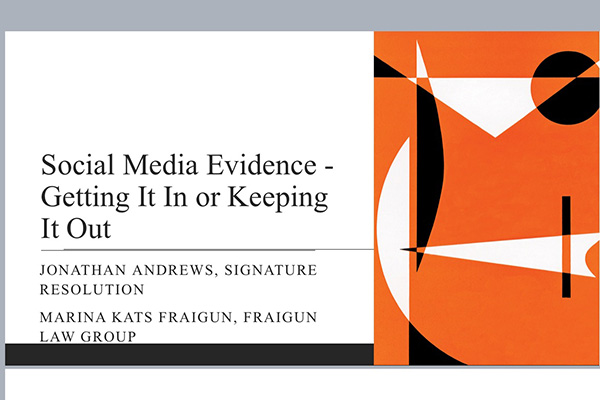Understanding Paternity Rights in 2024: What Every Employee Should Know
Understanding Paternity Rights in 2024: What Every Employee Should Know
In 2024, understanding paternity rights is more crucial than ever. Paternity leave not only strengthens family bonds but also enhances the overall well-being of employees. With recent legislative changes, it’s essential for employees to stay informed about their rights and the various protections available to them.
Recent Changes in Paternity Rights
Extended Leave Options
Recent legislation has significantly extended the duration of paternity leave, offering fathers more time to spend with their newborns. This increased flexibility allows parents to better balance their work and family responsibilities. Fathers can now take advantage of extended leave periods, as well as the option to utilize intermittent leave, which can be particularly useful for those with high-demand jobs or complex family situations.
The extended leave options provide fathers with the opportunity to be more actively involved in the crucial early stages of their child’s life. This not only benefits the child’s development but also strengthens the bond between the father and the child. Additionally, studies have shown that paternity leave can have long-term positive impacts on the family’s well-being, including improved mental health, better work-life balance, and increased gender equality in household responsibilities.
Financial Support During Paternity Leave
In 2024, there have been significant enhancements in financial support available to employees taking paternity leave. Many employers are now providing more robust benefits, including wage replacement options to ease the financial burden during this critical bonding period. In addition to employer-provided benefits, the state of California offers the Paid Family Leave (PFL) program, which provides eligible employees with partial wage replacement for up to eight weeks. This program is funded through employee payroll deductions and ensures that new fathers can take necessary time off without the stress of losing their income. Understanding these financial supports can help employees plan their leave more effectively and ensure they can focus on their family during this important time.
Protection Against Discrimination
With the growing recognition of the importance of paternity leave, protections against workplace discrimination for fathers taking such leave have been significantly strengthened. Employees now have clear legal resources to address any issues that may arise during or after their paternity leave. This includes the ability to file complaints with relevant authorities and, if necessary, pursue legal action against employers who engage in discriminatory practices.
These enhanced protections help create a more inclusive and supportive work environment for fathers, ensuring that they can take the time they need to care for their families without fear of negative professional consequences.
Understanding Paternity Leave in California
California Family Rights Act (CFRA)
The California Family Rights Act (CFRA) has undergone important changes, expanding its eligibility criteria to include most employees working in the state. This act now provides job protection for employees taking paternity leave, guaranteeing that they can return to their positions or comparable roles after their leave. Understanding how CFRA interacts with other state and federal laws, such as the Family and Medical Leave Act (FMLA), is crucial for employees to fully benefit from its provisions.
California Paid Family Leave (PFL)
The California Paid Family Leave (PFL) program provides benefit payments to eligible employees, which are funded through employee contributions to the State Disability Insurance program. Coordinating the use of PFL with CFRA leave is essential for maximizing the available leave benefits and ensuring continuous income during the leave period. Employees should be aware of the specific eligibility requirements and application processes for both PFL and CFRA to ensure a smooth and seamless leave experience.
Family and Medical Leave Act (FMLA)
While FMLA shares some similarities with CFRA, it has broader eligibility criteria and can overlap with the state-level law, providing additional protections for employees. Understanding the interplay between these overlapping laws is crucial for employees to make informed decisions about their leave options and ensure they are taking full advantage of the available benefits.
How to Apply for Paternity Leave
Eligibility Requirements
Eligibility for paternity leave under CFRA, PFL, and FMLA can vary, and it is vital for employees to carefully review the specific requirements for each. Additionally, some employers may offer additional paternity leave benefits beyond what is required by law, so it’s important to be aware of your company’s policies as well.
Application Process
The process of applying for paternity leave should begin with notifying your employer and submitting the necessary documentation. Planning this process in advance can help ensure a smoother transition and a better understanding of your employer’s specific requirements and procedures.
Coordination with Employer
Effective communication with HR and direct supervisors is key to managing your paternity leave. Discussing plans for workload management during your absence can help maintain a good relationship with your employer and ensure a harmonious workplace environment upon your return.
Filing for PFL Benefits
When filing a claim for PFL benefits, employees must adhere to specific documentation requirements and submission timelines. Keeping track of the claim’s status is important to ensure that benefits are received without delay, allowing for a more seamless financial transition during the leave period.
Protecting Your Right to Paternity Leave
Understanding Your Rights
A comprehensive understanding of state and federal laws, such as CFRA, PFL, and FMLA, is crucial for protecting your paternity leave rights. Awareness of these rights can help prevent any violations or unfair treatment by employers.
Steps to Take if Your Rights Are Violated
If an employee’s paternity leave rights are infringed upon, it is essential to document all relevant interactions with the employer, consult with HR, and potentially file a complaint with the California Department of Fair Employment and Housing or a similar federal agency. These proactive steps can help address and resolve any issues that may arise.
Legal Recourse for Violations
In the event that legal action becomes necessary, seeking representation from experienced employment attorneys, such as those at the Fraigun Law Group, can be advisable. These legal professionals can provide guidance and support in navigating the complexities of employment law and ensuring that the employee’s rights are fully protected.
Common Misconceptions About Paternity Leave
Myth Busting
It is important to address and dispel any common misconceptions about paternity leave. Paternity leave is essential for both parents, and legal protections are in place to prevent employer retaliation or discrimination. Addressing these myths can contribute to cultural progress and ensure legal compliance within the workplace.
Final Notes
Understanding and exercising your paternity rights in 2024 is vital for employees. By staying informed and proactive, you can effectively manage your paternity leave and uphold your rights in the workplace. For further assistance or to address potential legal concerns, consider reaching out to the Fraigun Law Group for a free consultation.




